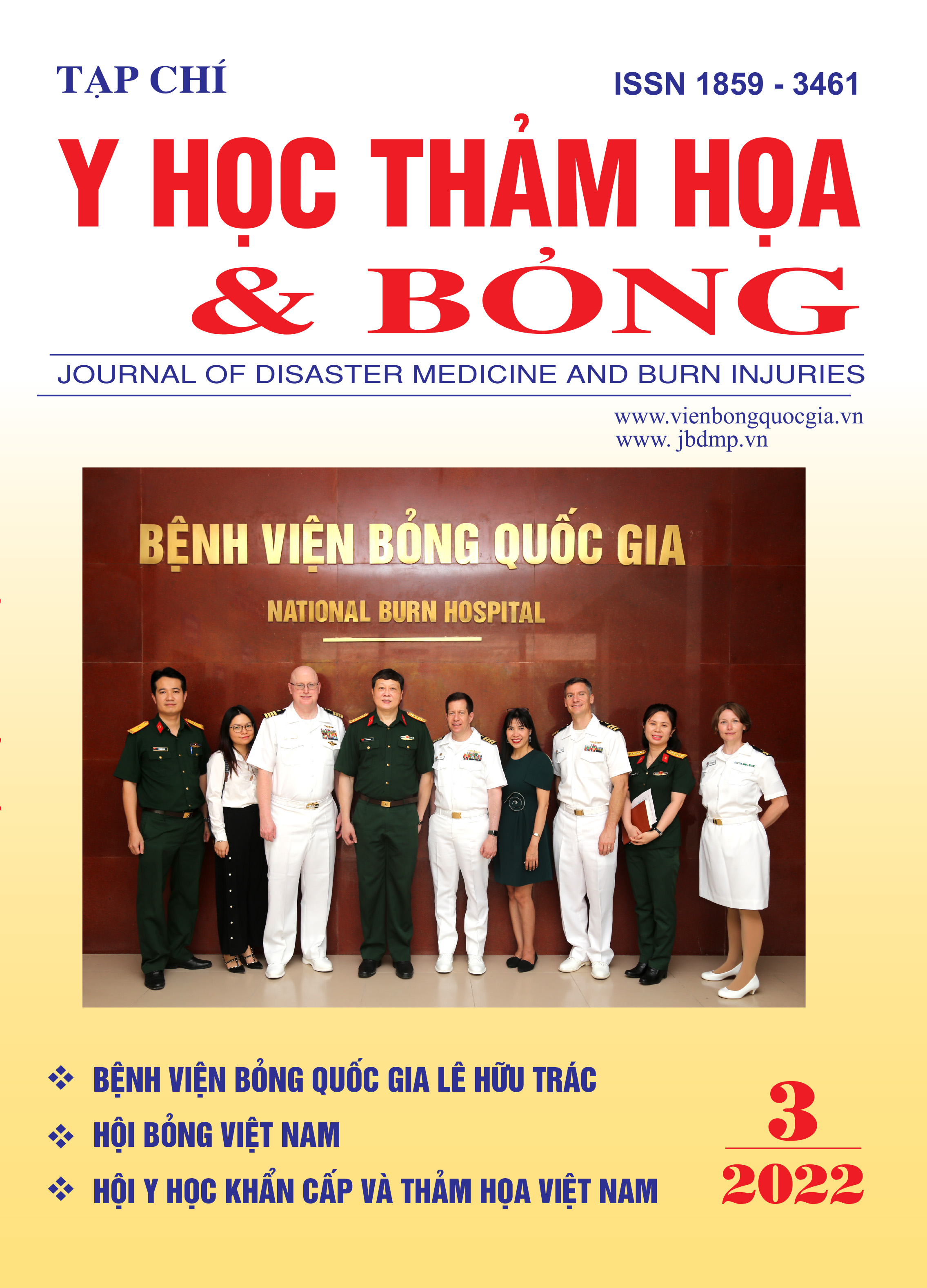Studying the Effects of Autologous Platelet Rich Plasma (PRP) on Changes of Immunohistochemistry Staining Speciment of Chronic Wound Local.
Main Article Content
Abstract
Objective: This study was to evaluate the effects of Autologous Platelet Rich Plasma (PRP) on changes in immunohistochemistry staining specimens of chronic wound local.
Subjects and method: We conducted a descriptive longitudinal study at the Wound Healing Center of Vietnam National Burn Hospital, from November 2020 to May 2020. 30 patients with chronic wounds were enrolled in the study and were injected with the autologous PRP (PRP) in peri-wound and wound beds. We assessed and recorded the changes in immunohistochemistry staining specimens of chronic wound local at the time before therapy and the first, second and third week of studied progress.
Results: PRP helped to improve the wound healing process: Reduced the swelling and improve the structure of extracellular matrix (ECM) at chronic wound local (increased number of fibroblast cells and neo-vascular).
Conclusion: We realized that the autologous PRP promoted the wound healing process by improvement of ECM in the chronic wound site.
Article Details
Keywords
Chronic wound, autologous PRP, , immunohistochemistry
References
2. Nussbaum S. R., Carter M. J., Fife C. E., et al (2018), "An Economic Evaluation of the Impact, Cost, and Medicare Policy Implications of Chronic Nonhealing Wounds", Value Health, 21(1), p27-32.
3. Yuan T., Zhang C. Q., Tang M. J., et al (2009), " Autologous Platelet-rich Plasma Enhances Healing of Chronic Wounds", Wounds, 21(10), p280-285.
4. Nguyen Ngoc Tuan and Nguyen Thi Bich Phuong (2018), "Assessing efficiency of the autologous platelet-rich plasma (PRP) therapy in the treatment of chronic ulcers", European Journal of Research in Medical Sciences, 6(1), p7-24.
5. Frykberg R. G., Driver V. R., Carman D., et al (2010), "Chronic wounds treated with a physiologically relevant concentration of platelet-rich plasma gel: a prospective case series", Ostomy Wound Manage, 56(6), p36-44.
6. Vladimir N, Darya A, Leonid A, et al (2014), "Efficacy of platelet-rich plasma for the treatment of chronic wounds", EWMA Journal, 14(1), p37-41.
7. Gabbiani G., Ryan G. B. and Majne G. (1971), "Presence of modified fibroblasts in granulation tissue and their possible role in wound contraction", Experientia, 27(5), p549-550.
8. Stuart Enoch and Patricia Price (2004), "Cellular, molecular and biochemical differences in the pathophysiology of healing between acute wounds, chronic wounds and wounds in the aged", World Wide Wounds, Aug 2004.
9. Grice E. A. and Segre J. A. (2012), "Interaction of the microbiome with the innate immune response in chronic wounds", Adv Exp Med Biol, 946, p55-68.


